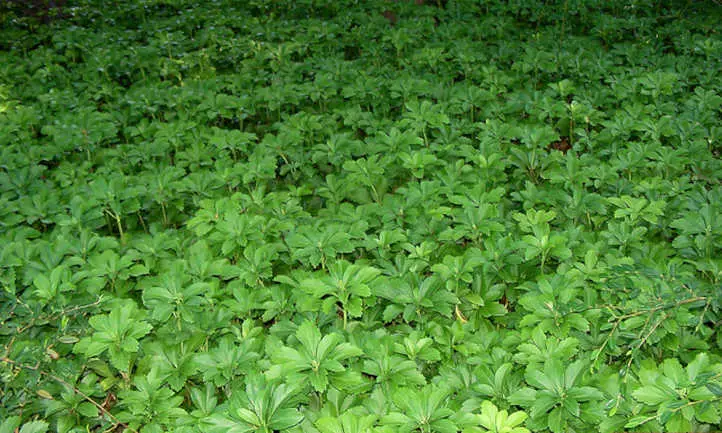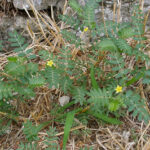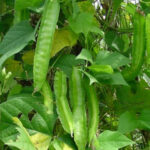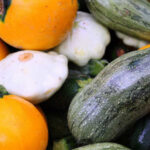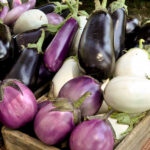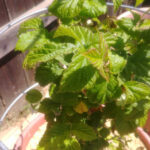Evergreen ground cover plants are the perfect option to fill difficult garden spaces and a way to add beauty and color to your landscape. There are many choices of evergreen ground covers and we know it’s overwhelming to decide which one is right for you, your region, and your landscape.
This article highlights 25 evergreen ground cover plants that may be an option for you, or at the very least, give you ideas for that perfect ground cover. You’ll see that they each have their own pros and cons, and some plants offer evergreen varieties within their family. Which gives you even more options.
Many ground covers on our list require minimal maintenance, most suppress weeds and practically all of them are great at preventing soil erosion. Take into consideration what is native to your area, if it is appropriate for the climate, and if it is something that will thrive under your care. However, don’t fret about how many plants are available; we’re happy to give you a starting point and make your journey easier.
25 of the Best Evergreen Ground Covers
Dwarf Lingonberry
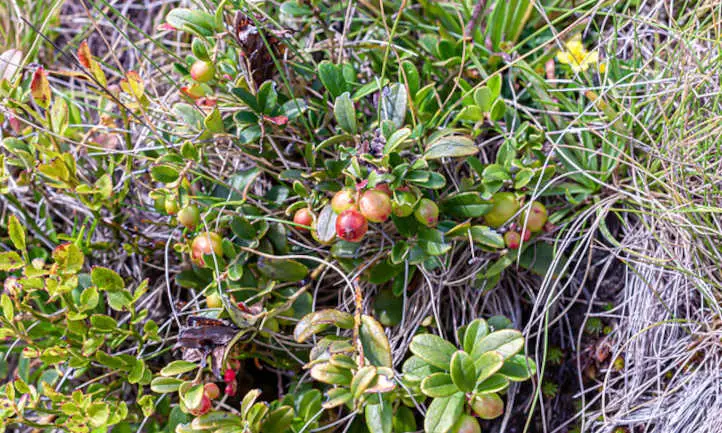
Vaccinium vitis-idaea minus goes by the common name of dwarf lingonberry. This evergreen ground cover spreads by runners and only grows 4-6 inches tall. In the spring, pink bell-shaped flowers bloom and turn into edible red berries in the fall. The oval-shaped leaves stay glossy throughout the year. It’s hardy from Zone 8 and below and grows better where summers aren’t too hot. In the wild, lingonberry is an important source of food for black bears, moose, caribou, and hares.
Learn More: Lingonberry Plants
English Ivy

English ivy (Hedera helix), is a fast and aggressive growing perennial ground cover plant. In some areas, they list it as invasive and it’s toxic to humans and animals. On the plus side, it grows in hardiness zones 4-9 and makes a great ground cover when you need to quickly fill a difficult area. English ivy is a cascading plant that likes to climb and it has waxy, leathery, lobed leaves with white veins. It produces small yellow-green starburst flowers in the late summer that develop into berries that are enjoyed by birds.
Learn More: English Ivy
Creeping Rosemary
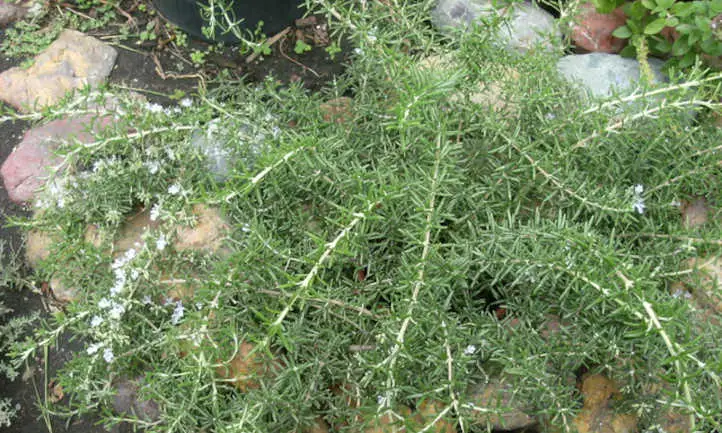
Another fast-growing ground cover is creeping rosemary, Rosmarinus officinalis “Prostratus.” It’s also commonly known as trailing or prostrate rosemary since it can spread up to 8 feet. It has gray-green lancelet leaves that are aromatic – these leaves are edible too. Pale blue flowers grow in clusters that show up throughout the warm summer months. Creeping rosemary is native to the Mediterranean, thus it is only hardy in zones 8-10.
Learn More: Rosemary
Creeping Juniper

The horizontal plume-like branches of the creeping juniper make it a popular choice for those who want a ground cover plant that doesn’t require much attention. Creeping juniper, Juniperus horizontalis, has blue-green foliage that develops a reddish tinge in the winter. It is ideal for zones 3-9 and the female plants will produce obscure flowers that turn into blueish-grey berries. The size of these evergreen plants depends upon the cultivar, but they typically spread 6-8 feet and can get as tall as 2 feet. Blue star juniper is a variety that is ideal for rock gardens and helps prevent soil erosion.
Learn More: Creeping Juniper
Creeping Thyme
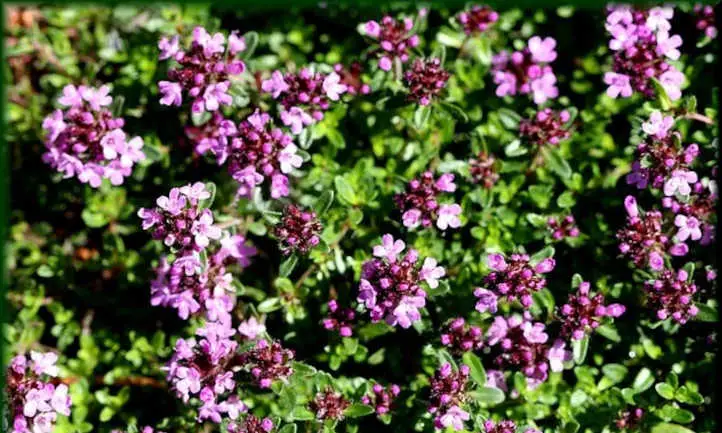
Creeping thyme (Thymus serpyllum) will remain evergreen in areas that experience mild winters, thus it is also classified as a semi-evergreen. It is drought tolerant and exhibits woody stems with tiny, oval-shaped bluish-green leaves. Though it may have fragrant leaves, creeping thyme isn’t ideal for culinary purposes. Bell-shaped purple flowers attract pollinators in the summer months and this evergreen plant is hardy in zones 4-8.
Japanese Spurge
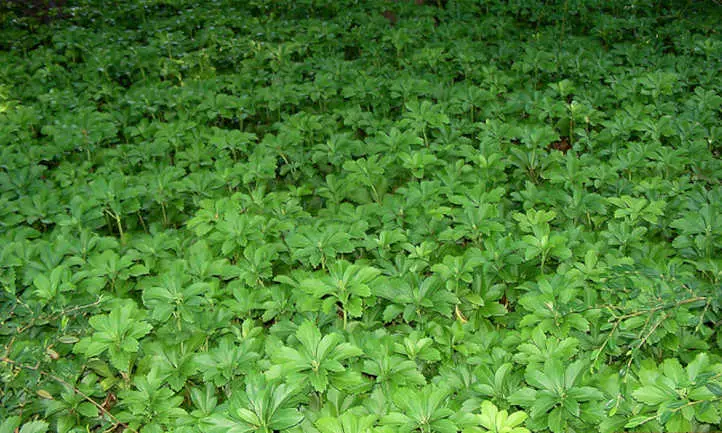
Japanese spurge, pachysandra terminalis, is a shrubby evergreen groundcover native to Japan. It’s hardy in zones 4-8 and grows in height up to 10 inches. In areas with colder weather, it’s a semi-evergreen ground cover. It can be an invasive plant, so it’s best to plant it where it can’t spread easily. The leaves are small and finely toothed, and it blooms dainty white flowers in the early spring. Japanese spurge prefers part shade to full shade and thrives in well-drained soil.
Learn More: Japanese Spurge
Bearberry
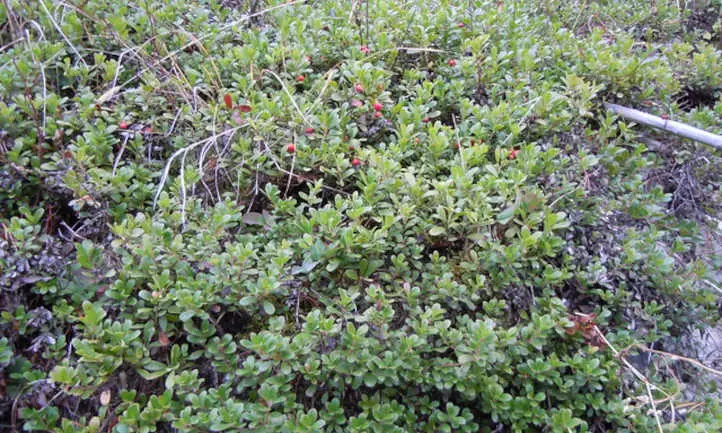
One of the best evergreen ground covers that requires minimal care is bearberry (Arctostaphylos uva-ursi). Commonly known as kinnikinnick or bearberry, it is a source of food for bears and other wildlife. It thrives in sandy soil and soils low in nutrients. Freezing climates are not an issue for this ground cover plant as it is ideal for zones 2-7. It prefers full sun but will tolerate dry shade. Bearberry spreads by rhizomes and forms a dense ground cover with deep green waxy leaves. The bell-shaped pink flowers provide seasonal interest and a lovely fragrance.
Hens and Chicks
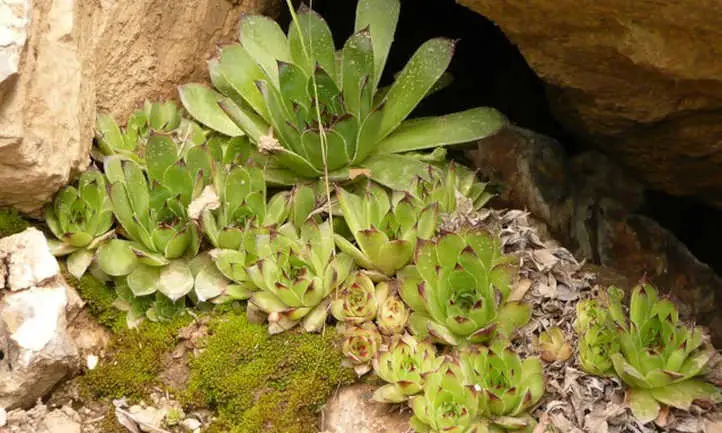
An ideal ground cover for dry soil and rock gardens is hens and chicks (Sempervivum tectorum). These evergreen ground cover plants are succulent and thus drought tolerant. They store water in their leaves and were originally planted on thatched roofs to prevent fires. These succulent plants are a common sight in garden beds and grow well in zones 3-8. The leaves are arranged in large rosettes (the hen) that produce small offset rosettes aptly called chicks. The hens die after producing a long-stalked flower. Hens and chicks are slow-growing, but plant them in bare soil and they will gradually multiply.
Creeping Myrtle

One of the best evergreen ground cover plants for deep shade is creeping myrtle (Vinca minor), because of its attractive foliage and lavender flowers. This low-growing plant helps suppress weeds with its sturdy root system and dense foliage. The purple star-shaped flowers stand out against the shiny green leaves and this trailing plant will grow in zones 4-9. Keep in mind the plant is toxic to pets, but it will tolerate dry soil and prefers partial shade to shade.
Creeping Phlox
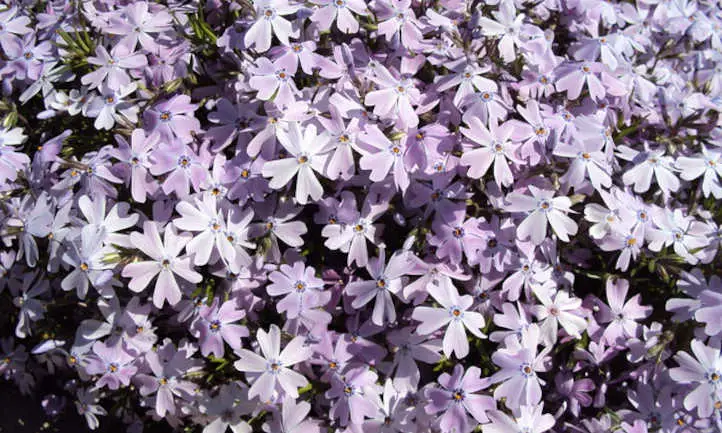
Creeping phlox (Phlox subulata), is a semi-evergreen ground cover plant that forms a low thick mat, growing less than a foot tall. Pink, star-shaped flowers bloom in the early summer, hiding the dainty evergreen foliage. Creeping phlox is best grown in zones 5-9, as it will not tolerate colder climates. This plant grows in a variety of soil conditions from acidic to alkaline but thrives best in well-drained soils. It is low maintenance and enjoys full sun like many other ground cover plants.
Learn More: Creeping Phlox
Black Mondo Grass
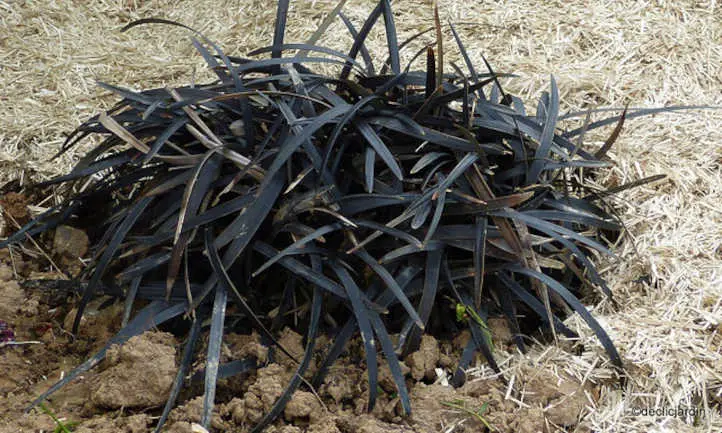
This ground cover plant provides year-round interest due to its striking purple-black evergreen foliage. Black mondo grass (Ophiopogon planiscapus ‘Nigrescens’), thrives in the full sun and grows in zones 5-10. It prefers moist soil and each grass clump will reach 6 inches in height. Known as a slow grower, the purple flowers that bloom in summer make it worth the wait. Mini mondo grass is a variety that has dark green foliage and typically only grows 4 inches tall.
Learn More: Black Mondo Grass
Creeping Raspberry
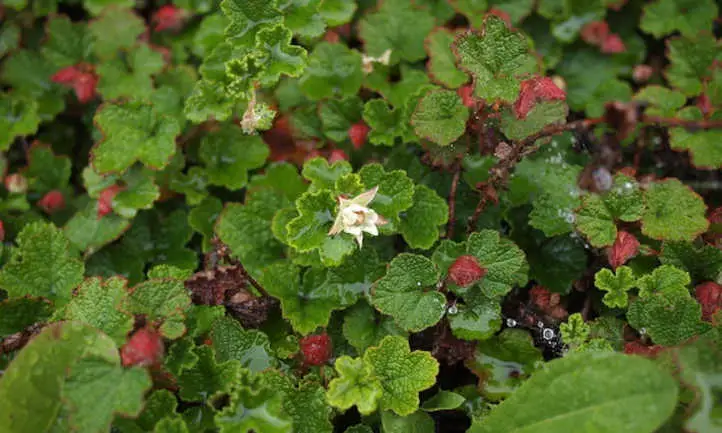
Rubus hayata-koidzumi is the botanical name for creeping raspberry. This creeping ground cover will keep its leaves throughout the year in zones 7-9 and enjoys full sun to partial shade. It will live even with sporadic watering and dry shade. In the summer, creeping raspberry produces small white flowers that can be lost within the abundance of lobed emerald leaves. The fruit is edible, but the thorns along the woody stems are something to be aware of. In the winter the leaves will develop a lovely red hue.
Learn More: Creeping Raspberry
Creeping Jenny
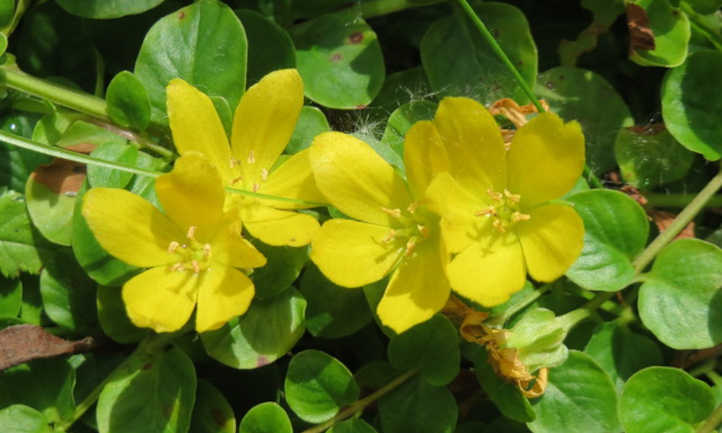
The botanical name of creeping jenny is Lysimachia nummularia. This ground cover will fill in an area quickly and show off lime-colored leaves throughout the year in zones 2-10. Consider planting it in an area where other plants have a difficult time growing, but in a place where it won’t invade everything else. It will thrive in full sun or full shade because of its sturdy root systems. In the summer, flowers bloom yellow, and the round leaves turn bronze in the cold winter months.
Prostrate Rock Cotoneaster
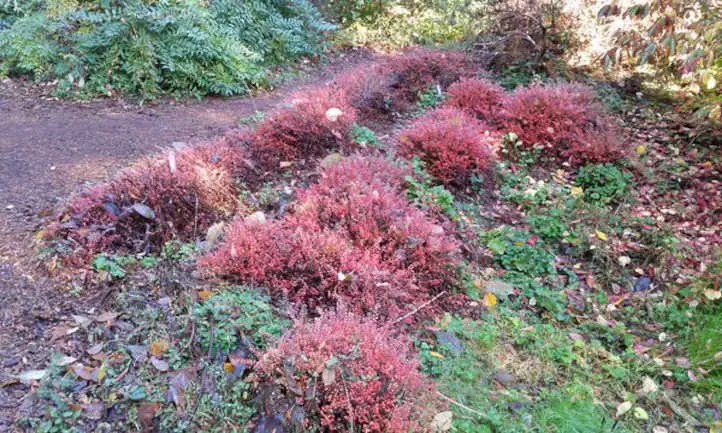
This evergreen ground cover is an option for areas that receive cold winters. The USDA hardiness zone is 4-7 and its botanical name is Cotoneaster horizontalis ‘Perpusillus’, The ideal location is full sun, but it will tolerate partial shade. Cotoneaster has tiny leaves and ornamental red berries with thick intertwining branches. It might fit into the category of upright plants with a height of 1 to 2 feet tall, but it has a spread of 5-7 feet wide. In the late spring, it blooms small white flowers that turn into striking red berries.
Learn More: Cotoneaster horizontalis
Spotted Deadnettle
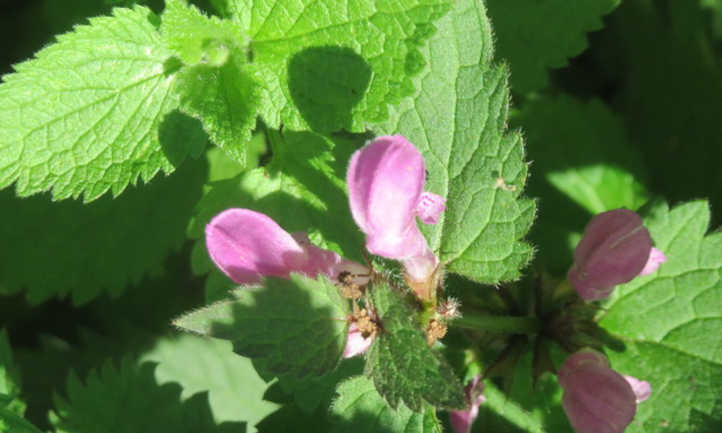
Spotted deadnettle (Lamium maculatum) only remains evergreen in milder climates that don’t receive a freezing winter. It is a perennial that is hardy in zones 4-8. They like full to partial shade and tolerate wet soil as long as it is well-drained. Their leaves have serrated edges with a silvery tinge and in the summer they bloom purple flowers. As their stems touch the soil, they root and will eventually form a mat. The average height is less than a foot with a spread of 2-3 feet.
Siberian Cypress
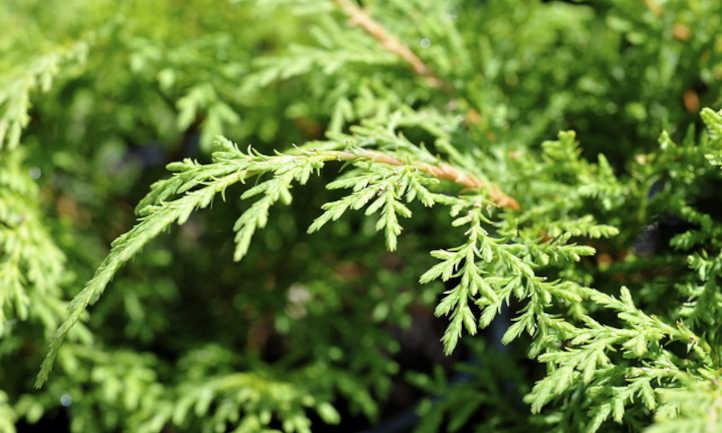
Microbiota decussata, commonly known as Siberian cypress, is extremely cold tolerant with a hardiness zone of 2-7. The feathery foliage, resembling juniper foliage, turns brownish-purple during the winter and it can be shaped or pruned to fit your landscape. It does not produce flowers or berries, but spreads up to 6 feet and reaches heights up to 18 inches. Use it to fill in rocky hillsides with thin soil to help with erosion control. It grows in full sun to part sun and requires a moderate amount of water.
Learn More: Microbiota decussata
Angelina Stonecrop
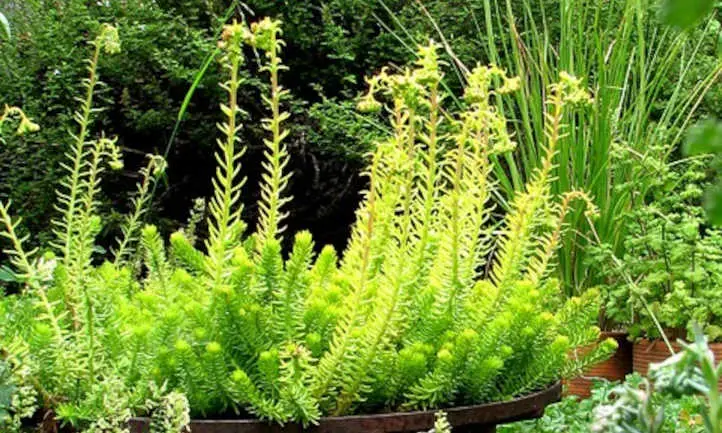
Angelina stonecrop, Sedum rupestre ‘Angelina’, is a ground cover that is hardy in zones 3-11. Thus, it is cold tolerant and the green, needle-like foliage turns yellow in the winter. In the summer the yellow blooms provide color and interest making this a good addition to most landscapes. It grows moderately fast, prefers full sun, and doesn’t require lots of water once it’s established. Angelina stonecrop is ideal for those who want a low-maintenance evergreen ground cover.
Christmas Fern

Polystichum acrostichoides is commonly called Christmas fern as it stays green through Christmas in areas that receive a mild winter. Its hardiness zone is 3-8 and it forms in clumps 1-2 feet tall and 2-3 feet wide. Soils that are moist and well-draining will ensure that these beautiful ferns thrive. Full to part shade is ideal, making it a great choice to plant under trees and large shrubs to fill in the space and prevent erosion. They don’t bloom, but in the spring it produces fiddleheads.
Hoogendorn Japanese Holly

This variety of japanese holly, Ilex crenata ‘Hoogendorn’, grows low to the ground and spreads up to 2 feet wide. Its hardiness zone is 6-9 and the flattened leaves are similar to boxwood. White blooms erupt in the spring and the waxy leaves look pretty all year long. Hoogendorn will do best in full sun and in soil with good drainage. It requires a moderate amount of water but will tolerate the soil becoming dry in-between waterings.
Globe Ice Plant
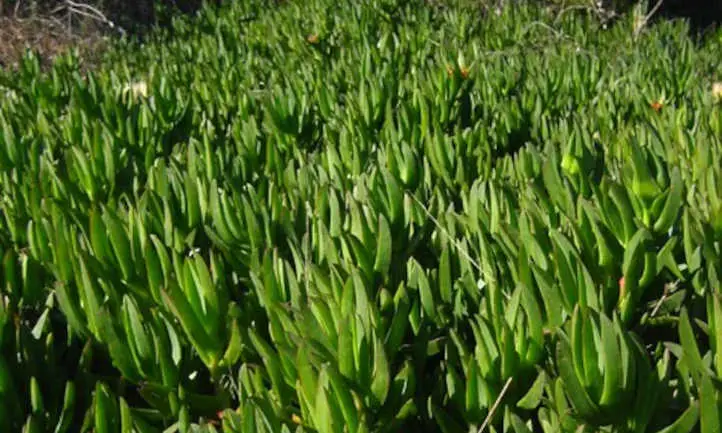
If you are looking for a ground cover that can withstand very cold climates, then the globe ice plant (Ruschia punctulata), could be a nice choice. It is a cold-hardy succulent that is also able to withstand low amounts of water. The stems are woody and thick with small foliage that remains vibrant throughout the year. In the spring, small pink flowers burst forth to add color to your landscape. The average height is less than 5 inches tall with a spread up to 15 inches.
Corsican Mint
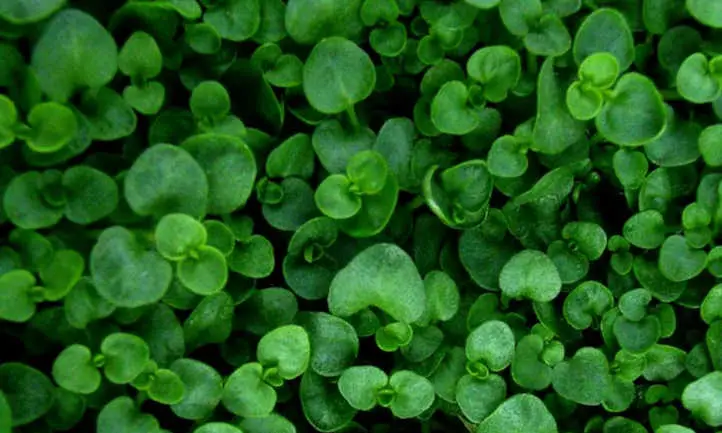
Mentha requienii is an evergreen ground cover in mild climates and hardy in USDA growing zones 7-11. It can be an aggressive grower and is labeled invasive in some areas of the United States. Corsican mint only reaches ¼ inch in height but will spread until it covers the entire area. Ideal for filling in crevices and walkways that are shaded and where it can be controlled. When stepped upon, it releases a pleasing mint scent.
Learn More: Corsican Mint
Brass Buttons

This evergreen is ideal for rock gardens and to fill spaces with its dense mat of foliage. Leptinella squalida is hardy from zones 4-10 but will remain evergreen in zones 9-10. It is low-growing with fern-like foliage and tiny yellow-green disk flowers that are reminiscent of buttons when they bloom. Regular watering and full sun (in mild climates) will keep this plant happy.
Learn More: Brass Buttons
Wall Germander
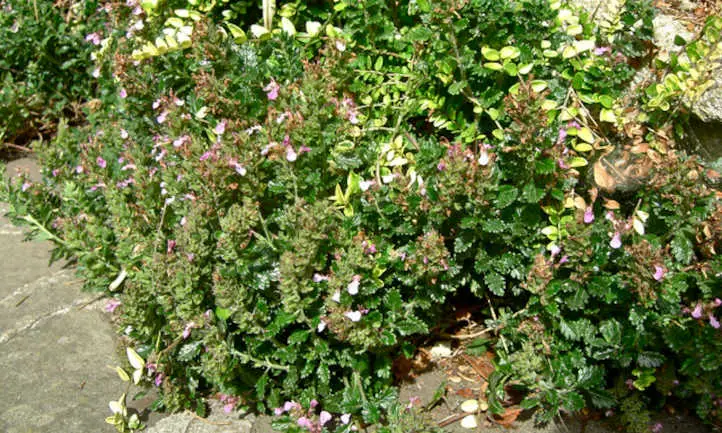
Wall germander is ideal when you want a groundcover with height. Mass plantings provide texture, color, and erosion control. Teucrium chamaedrys reaches up to one foot tall and spreads up to two feet. The aromatic dark leaves have a toothed edge and in July small purple flowers arrive. It is hardy in USDA zones 5-9 and prefers full sun within well-drained soil and a small to moderate amount of moisture.
Prickly Pear
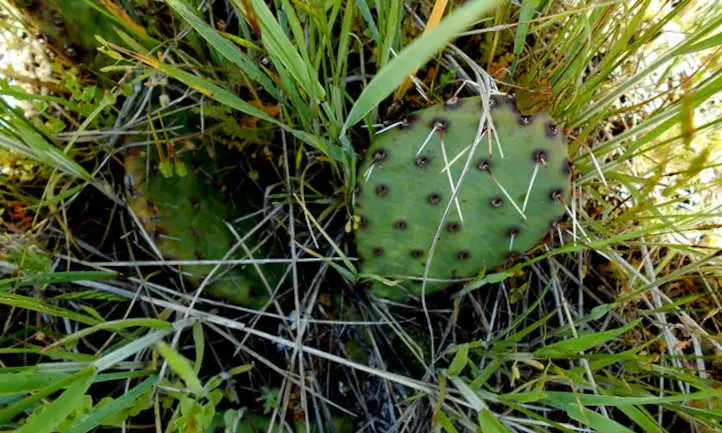
An ideal ground cover for dry areas is prickly pear, Opuntia spp. It prefers hot climates where it won’t receive much moisture, such as in USDA zones 3-9. This cactus forms clumps that can grow up to 14 inches tall. Beautiful yellow flowers with red centers bloom from June into July. Prickly pear thrives in dry, sandy soil and will tolerate drought conditions.
Candytuft
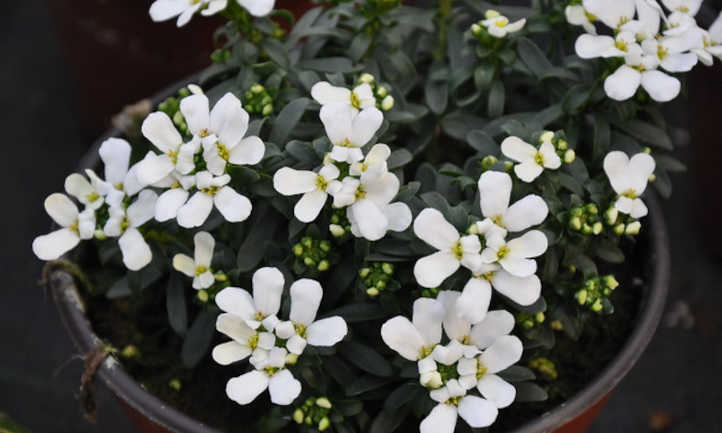
One look at this evergreen ground cover and you will understand why it gets its name. Candytuft, Iberis sempervirens, blooms a plethora of white flowers that attract many pollinators. It is hardy in zones 4-8 and ideal for a xeriscape yard because it is drought tolerant and loves the sun. The plant grows in bushy mounds, up to 12 inches tall and just as wide. However, it needs well-draining soil and full sun to thrive. The foliage keeps its dark green color throughout the winter.
Learn More: Candytuft
Frequently Asked Questions
Q: What is the fastest-growing evergreen ground cover?
A: There are many evergreen ground cover plants that grow quickly and one of the fastest is creeping thyme (Thymus serpyllum). Use it to fill in crevices along your stone path because it will fill the spaces in no time and it tolerates foot traffic.
Q: What is the best low-maintenance ground cover?A: Creeping juniper, Juniperus horizontalis, is one of the best low-maintenance ground covers because it is drought tolerant and will grow in poor soil and other areas that won’t support other plants.

